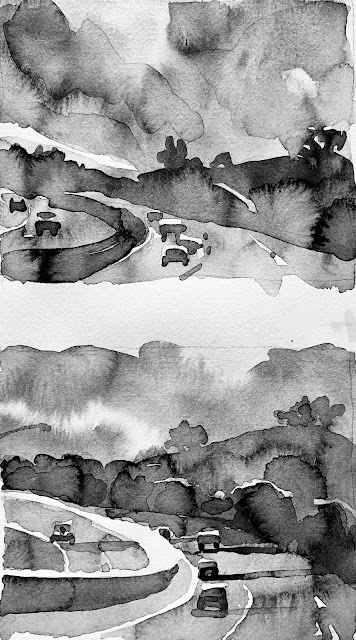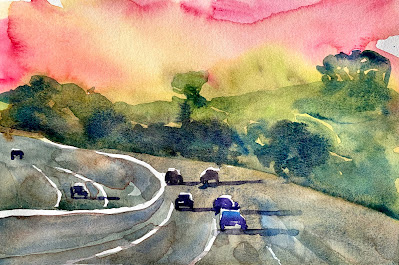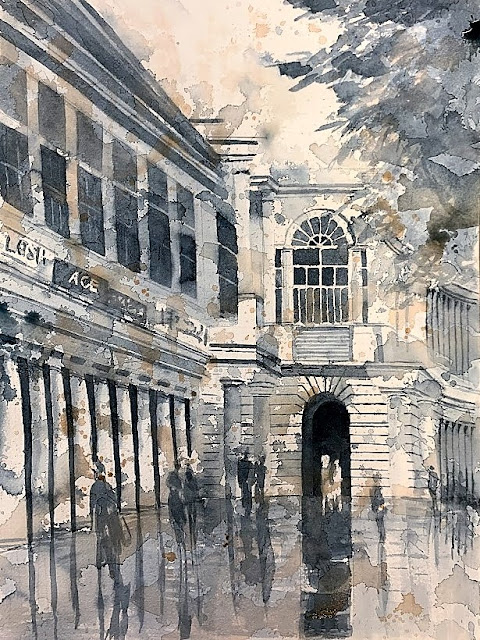Andy's workshop and gotcha!
I read so many watercolor books and really enjoy all the theory. I understand everything in theory, but until I took Andy Evansen's online workshop in August, I thought a value study was a black and white sketch that you do before your painting. I didn't understand how the black and white sketch needed to be manipulated to arrive at the foundation that would BE the painting, and then followed with more loyalty than the reference image. With his workshop, I suddenly understood how the notan and the value study relate. The notan is a stark black and white graphic, if you will. Andy started by painting all but whites in a medium gray, and instantly, it looked like a notan. I got it! Then he added darks to the grey parts and lo and behold, there was a 3-value value study. I've seen Laurel Hart paint this way (in color), but I never connected her layers to the values as in Andy's value study. He also had us paint the color version alongside the value study, so we could relate value and color right away, and paint the same shapes one after another. Sketch twice, and paint one in greys (saving the whites) and the other in medium (color) tones (saving the same whites). Then come back and paint in dark grey/black for the value study, and the same shapes in dark colors in the color painting. Both emerge together, and both relate, and you are practicing/warming up right before the color version. This also satisfies my long held ambition of doing paintings simulataneously :-)
I love doing my little Payne's Grey studies, but am still having trouble with making the colors the right values. When I pick a color, I forget the value it needs to be, or more often, I don't get dark enough. I feel I am close though - I am almost getting it.
This is what Andy recommended in an online interview - and I agree! I've been doing just this lately.
I do need to spiff up my car kit so I have it with me at all times.
Here are my value studies and one color version for a painting entitled "Covid Commute."
...do nothing but value studies for a while. Can't overstate that. You must learn to simplify, and you have to learn to see color as value. Second, spend time doing nothing but small color thumbnails using a very limited palette. Too many students come in with 60 tubes of paint and spend more time trying to pick the right one than learning how to mix colors. Most of the colors you see in nature aren't found in a tube. That and working thumbnail size will force you to begin seeing the large important shapes first and foremost. And third, have a sketchbook with you at all times and draw whenever you have a chance.





Yes, that was the essence of Andy's workshop! And I love your value and color studies, Tanvi!
ReplyDeleteI like the idea of a car paint kit. I should carry my mini paint kit when I go out for a walk!
-Susan